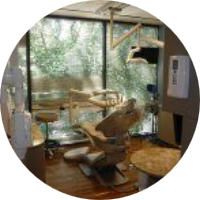Having healthy teeth not only helps you look and feel better, but it can also give you a boost in your professional career. That’s because a great smile helps you make a good first impression during interviews and business meetings.
If your teeth are damaged and need some work, cosmetic dentistry offices may be the right solution. They offer many treatment options for different dental problems.
Teeth Whitening
Teeth discoloration usually falls under two categories: extrinsic and intrinsic. Extrinsic stains occur on the outermost layer of your teeth, the enamel. Though harder than bone, tooth enamel stains easily. Some culprits typically include red wine, coffee, tobacco, and various types of colas. Conversely, intrinsic stains, which is the discoloration of the dentin or inner structure of the teeth, are often caused by medications like chlorhexidine.

Fortunately, a cosmetic dentist has the means to whiten them professionally using a fast-acting and effective peroxide gel. First, a rubber shield is used, often called a spacer, to protect your gums and tongue from the solution. The peroxide ingredient is then activated using a laser or UV light. As the ingredient starts working, oxygen gets into the enamel, gradually making your teeth whiter. Professional and effective results can actually be achieved in just one visit. In fact, over 82.5% of people who received in-office teeth whitening saw a noticeable difference.
It should be noted, though, that the results from professional teeth bleaching or whitening won’t last forever. You can, however, do your part in maintaining the brightness of your pearly whites by maintaining good oral hygiene. This includes regular flossing, brushing, and avoiding foods and drinks that stain.
Additionally, your teeth may need some preparation before they can actually be whitened. Cavities, for example, may need treatment first so that the whitening solution doesn’t pass through these decayed portions and reach inner structures. If you have receded gums, they’ll need to be adjusted because the exposed roots of your teeth don’t respond well to these whitening agents and will remain yellow.
Dental Bonding
This process involves applying a tooth-colored resin material using adhesives to damaged parts of your teeth with the use of adhesives. It’s a procedure that can be used to change the shape of teeth, repair cracked teeth, and close spaces between teeth.
There are two types of dental bonding, namely direct composite bonding and adhesive bonding. The first process involves dentists using tooth-colored composites to fill in cavities or repair chipped and cracked teeth. This material can also be applied directly to the surface of your teeth.
Adhesive bonding, on the other hand, involves the attachment of a restoration to the damaged tooth. It’s generally recommended for porcelain veneers, crowns, and bridges. First, your dentist selects a color that matches the color of your teeth. Then, the damaged teeth are prepped and applied with a bonding agent. A tooth-colored resin is then applied on the tooth and manipulated until it’s the perfect shape. Lastly, the resin material is hardened using a UV light.
The great thing about both procedures is that they are cheaper compared to the other cosmetic dentistry procedures out there. They usually can be completed in one office visit, unless multiple teeth are involved. You’ll also be awake throughout the entire procedure, as anesthesia is not required. If you’re on the fence about the right bonding procedure, talk to your dentist and see which one they recommend based on your problems.
If you would like to have a better smile and more confidence in life, talk to a cosmetic dentist today. They offer a wide variety of services that can improve your smile and make life more enjoyable overall.
Sources
Cosmetic Dentistry – Tooth Whitening, dentalhealth.org
Teeth Whitening Statistics, statisticbrain.com




